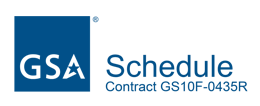Resources
Assessing Your Team Members Readiness for Change
By Michael Wilkinson, CMF
Managing Director, Leadership Strategies, Inc.
When it comes to change, there are typically four types of people in an organization.

- Early adopters. They are convinced that the change is needed and are excited about the possibilities. Often, many of the people in this group knew change was needed long ago, so they welcome it now.
- Followers. They are willing to go along. They generally don’t like the change, but are willing to give it a chance perhaps because they believe in the leader or the organization. Sometimes, they just want to keep their jobs.
- Skeptics. This group is pretty sure that change is not a good idea. However, they are willing to engage in discussion, listen to the arguments, and possibly test the waters. If they can be convinced that the change is necessary, they are typically willing to cautiously give it a chance.
- Saboteurs. This group is so sure that change is a bad idea that they do all that they can to prevent the change from occurring. They are typically not open to change and often start as “closet nay-sayers” – speaking out against the change behind closed doors. In more advanced forms, saboteurs will drag their feet, get in the way, and sometimes behave deceptively to undermine the change efforts.
At Leadership Strategies, we believe you should consider targeting your communications about the reasons for change at the skeptical. This group is open to change, but needs to be convinced that the change is necessary. If you can convert a significant percentage of this group, you will likely have the critical mass needed for success.

